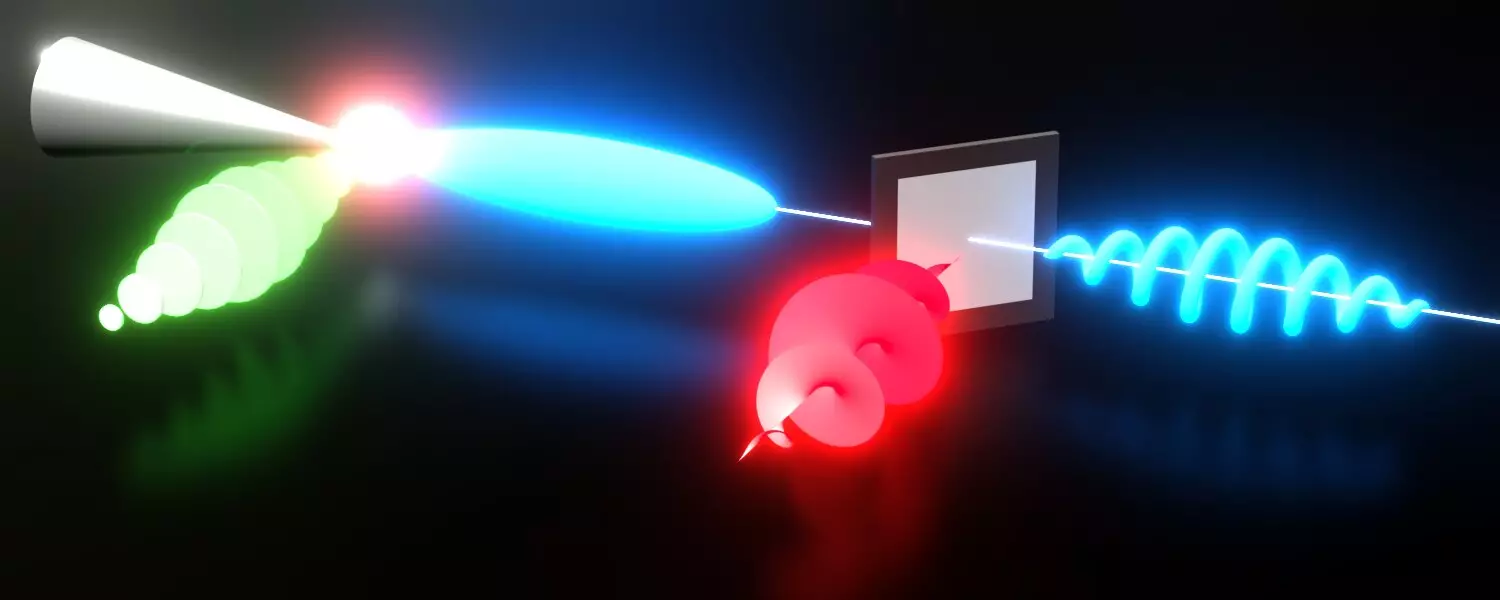Chirality is a phenomenon that permeates both nature and technology, defining how certain objects behave in three-dimensional space. Imagine placing the palm of your left hand against the back of your right hand—it is impossible for the thumbs of both hands to align, highlighting a fundamental property of handedness that is mirrored across various physical systems. Recent research out of the University of Konstanz has taken this concept to dazzling new heights by successfully imposing a three-dimensional chirality onto the wave function of a single electron. This breakthrough allows researchers to manipulate the electron’s matter wave into distinct left-handed or right-handed configurations, paving the way for groundbreaking advancements in quantum mechanics and various applications, from particle physics to electron microscopy.
Chirality Beyond the Conventional
What does it mean to shape an electron’s chirality? Traditional models associate chirality with spin, a quantum property that emulates self-rotation. Electrons can exist in two states—left-handed or right-handed—based on their spin orientation. However, the researchers at Konstanz have ventured beyond this framework. By engineering electron matter waves devoid of spin-related constraints, they achieved a purely geometrical chirality, providing a new lens through which to explore fundamental quantum phenomena.
Chirality’s impact is everywhere, from the molecular level, where the specific geometries of compounds define their biological roles—consider how one variant of a drug can heal while another can cause harm—to the composite materials and nanostructures used in modern technology. This innovative approach to manipulating chirality in individual electrons could significantly alter our understanding and application of these principles across various scientific domains.
Pathway to Chiral Electronics
The method employed by the Konstanz team involved a unique combination of ultrafast transmission electron microscopy and laser technology, aiming to create chiral patterns in ultrafast electron pulses. By modulating laser waves with spiral electric fields, they ingeniously facilitated an interaction between the electrons and laser photons. This interaction, which typically fails due to conservation constraints, was enabled thanks to the use of silicon nitride membranes, which altered the phase of the laser light without hindering the electron’s trajectory.
The ultimate result of this research effort resembled a tightly wound coil of mass and charge, manifesting as either left-handed or right-handed structures. Such configurations signify a transformative step forward in the quest to control fundamental particles, introducing a level of precision and capability that could redefine how we understand matter on a quantum level.
The Implications of Chiral Electron Beams
The capacity to engineer chiral electron beams opens extraordinary potential for various technological applications. For instance, in chiral optics, where control over light and electrons is critical, the application of these chiral electron beams could vastly improve the efficiency of optical tweezers and sensors, as well as hasten advances in fields like quantum computing and nanophotonics.
Moreover, the unique interaction between chiral electron coils and other chiral materials has been studied through scattering dynamics experiments with gold nanoparticles. These interactions resulted in notable rotational interference phenomena, affirming that the chiral signature remains intact during interactions. This newfound ability to maintain chirality across interactions offers exciting avenues for exploring material properties at atomic and nanoscopic dimensions.
Future Frontiers in Quantum Exploration
The implications of these findings extend far beyond mere academic curiosity; they could redefine what is feasible across a range of scientific fields. The research team has hinted at the applicability of their methodologies to other elementary particles, raising questions about how widespread the capacity for induced chirality may be across the universe. As we continue to unlock the secrets of the quantum world, the journey will likely uncover new particle interactions and even potential cosmological implications.
The next steps, according to Peter Baum and his colleagues, include utilizing chiral electrons in attosecond imaging and exploring the two-electron microscopy realm to better understand how chiral light interacts with chiral matter waves. If successfully navigated, these explorations could herald a new age of quantum technology where the geometric characteristics of particles dictate their behavior in ways previously thought to be impossible.
This monumental leap in our understanding of chirality at the quantum level is not just about modifying single electrons; it has opened the door to an entirely new dimension of scientific inquiry and technological advancement. The possibilities seem limitless, and the future looks undeniably bright.


Leave a Reply